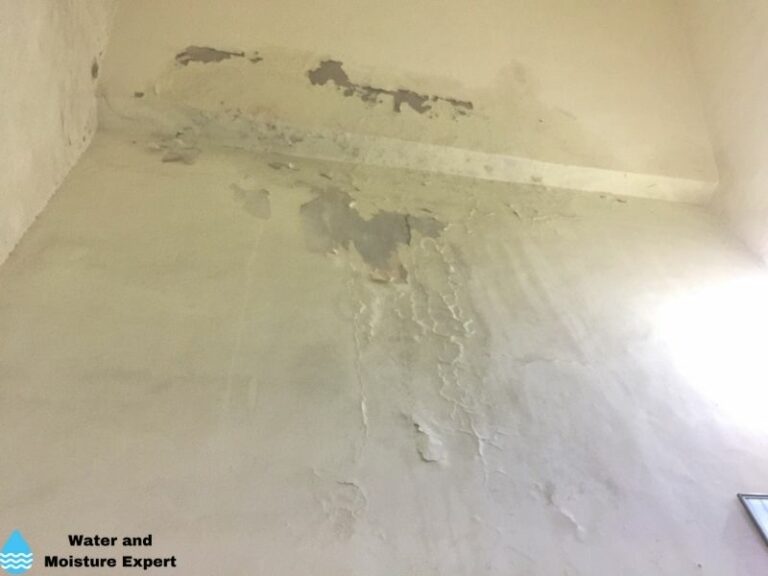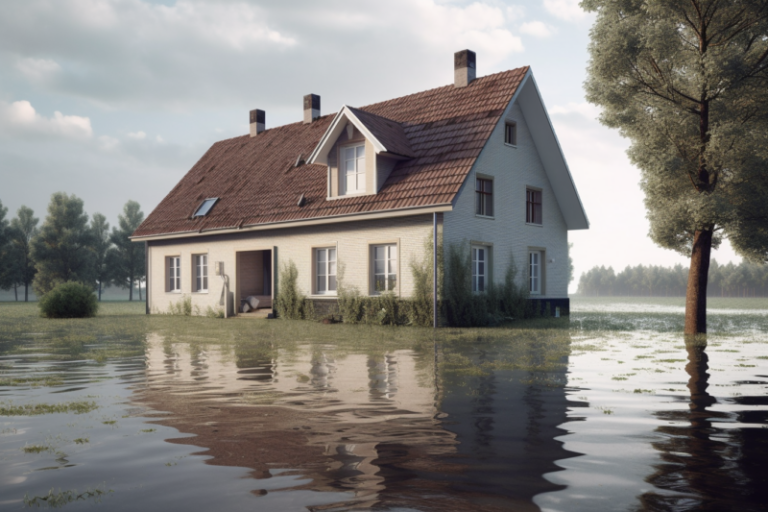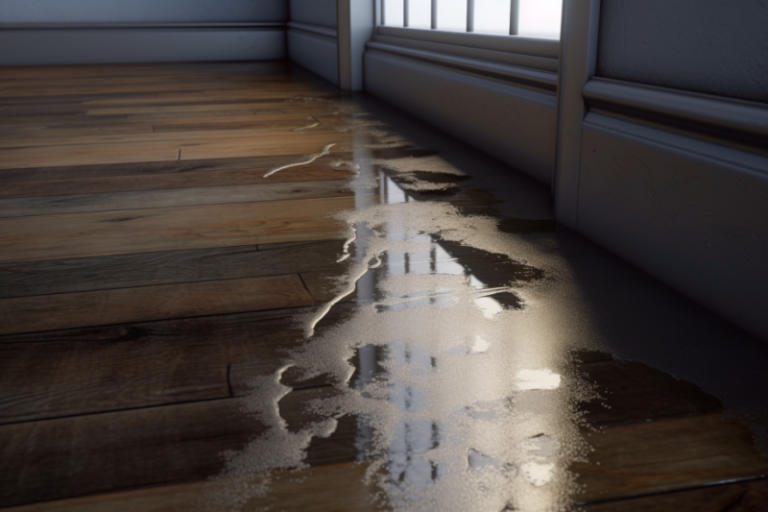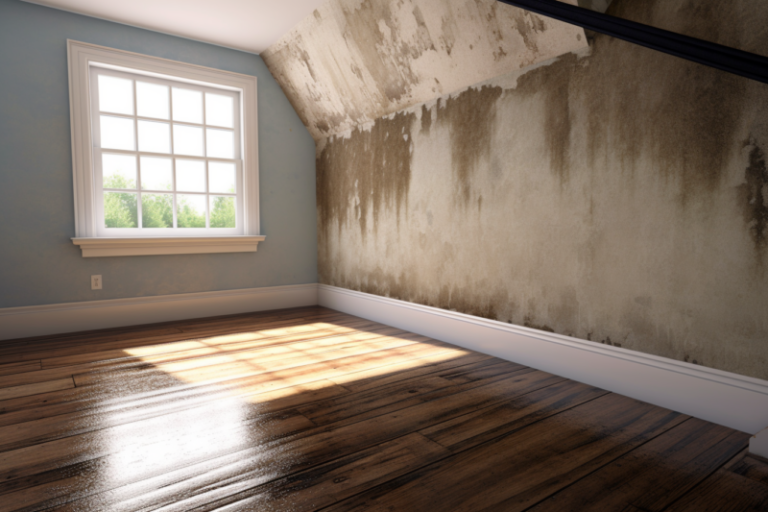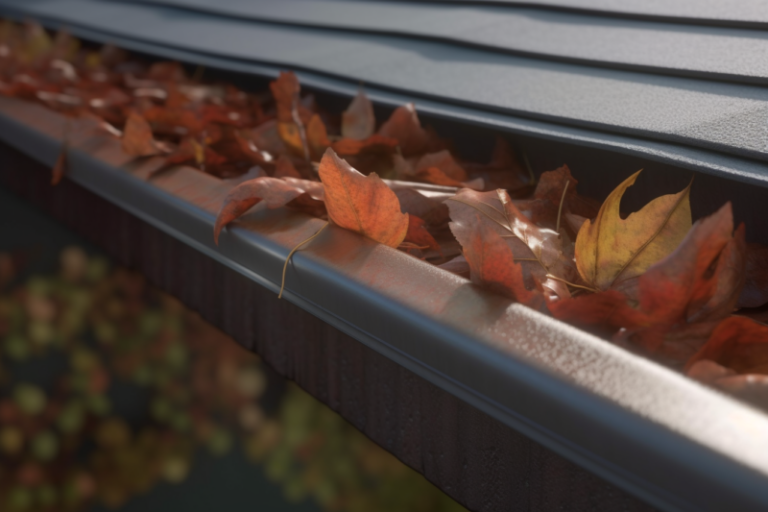The Risks of Ignoring Water Damage – What You Need to Know
Water damage is a common issue that many people face, but the question is whether it’s dangerous or not.
It’s a topic that requires serious consideration because it can lead to severe consequences if ignored. If you’re wondering whether water damage threatens your health and safety, read on as we delve into this topic.
Is water damage dangerous:
Water damage can be dangerous as it can lead to health hazards such as respiratory problems, infections, and allergies. It can also cause structural damage to your home and contribute to mold and bacteria growth. It is important to identify the type of water damage and act quickly to clean it up properly. Professional help may be needed for blackwater damage.
Water damage happens more often than we imagine. It’s crucial to know how harmful it can be. The consequences of water damage could range from mold growth to detrimental health effects.
Let’s explore the dangers of water damage and ways to avoid them.
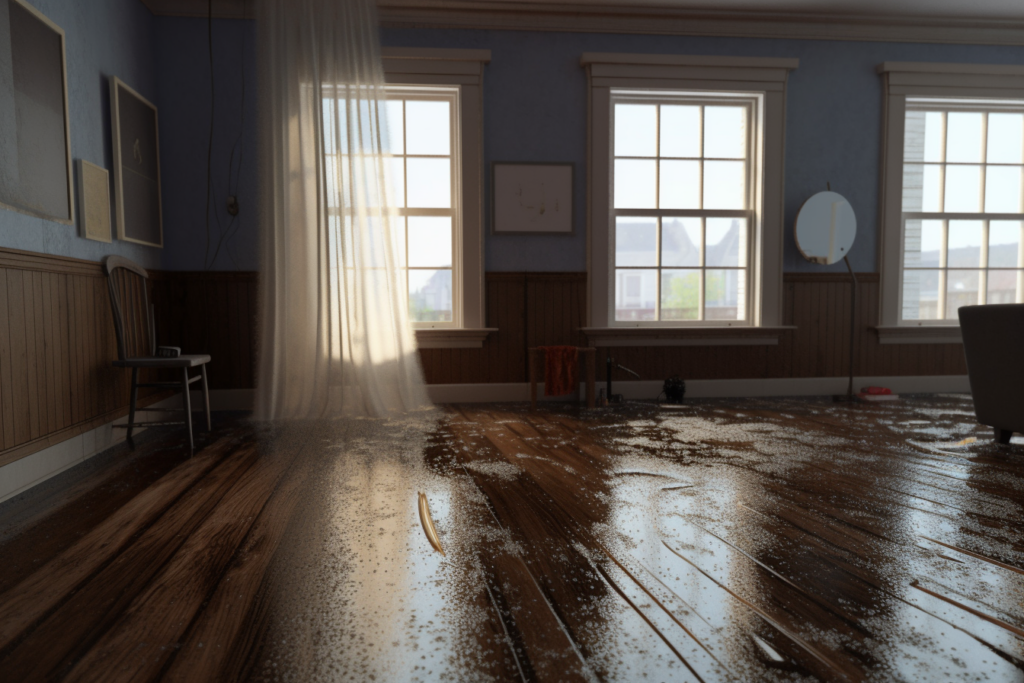
Contents
Is Water Damage Dangerous?
Water damage is a common issue that many homeowners face. The damage caused by water can lead to various health hazards and long-term problems.
It can cause structural damage to your house and contribute to mold growth, further exacerbating health issues.
This article will examine whether water damage is dangerous and what you should do if you experience it.
• Types of Water Damage
First, let’s look at the different types of water damage and how they can be dangerous. There are three main types of water damage; Clean water, Greywater, and Blackwater.
– Clean Water
Clean water damage occurs when a pipe or leaking water line is broken. It is considered the least dangerous form of water damage because it does not contain harmful contaminants.
Clean water may be safe to clean, but hiring a professional to ensure proper clean-up is always best.
– Greywater
Greywater is water that contains harmful contaminants but is not considered to be hazardous to health. It may contain bacteria and viruses but is not necessarily harmful to humans.
Greywater typically comes from washing machines, dishwashers, and sinks.
– Blackwater
Blackwater is the most dangerous type of water damage. It contains raw sewage, bacteria, and other harmful contaminants that pose a health hazard to humans.
Blackwater is typically caused by disasters such as flooding or sewage backups. It requires immediate professional cleaning and should not be tackled on your own.
• Health Risks Associated with Water Damage
Water damage can cause a wide range of health risks, including respiratory problems, infections, and allergies.
When water seeps into your home, it creates a moisture-rich environment, which can lead to the growth of mold and mildew.
Mold and mildew are notorious for causing various health problems, from allergic reactions to more severe respiratory conditions.
In addition to mold and mildew, water damage can also lead to the growth of bacteria and viruses. These harmful contaminants can cause infections, stomach problems, and gastrointestinal issues.
Children, elderly individuals, and people with compromised immune systems are particularly susceptible to these health hazards.
• Structural Damage Caused by Water Damage
Water damage doesn’t just pose a health hazard to humans; it can also cause significant structural damage to your home.
Water can seep into walls, floors, and ceilings, causing them to warp, buckle, and weaken. This can lead to expensive repairs and the potential for the collapse of your home if the damage is not addressed promptly.
• Cleaning Up Water Damage
If you experience water damage in your home, it is essential to act quickly. You should begin addressing the damage immediately to prevent further harm to your home and health. Here are some steps you can take to clean up water damage:
- Turn off the Electricity: First, turn off the electricity in any affected areas to prevent electrocution.
- Remove the Water: Use a wet vacuum or sump pump to remove any standing water.
- Get Rid of Wet Materials: Remove any wet materials, including carpets, furniture, and insulation, to prevent mold growth.
- Dry the Area: Use fans and dehumidifiers to dry out the area. It is important to ensure the area is thoroughly dry to prevent mold growth.
- Disinfect the Area: Use an appropriate disinfectant to sterilize the area and prevent the growth of bacteria and viruses.
- Call a Professional: If the damage is extensive or if it is blackwater, it is best to call a professional to avoid any health risks.
• Conclusion
In conclusion, water damage is a serious issue that can cause significant health hazards and structural damage to your home.
It is important to identify the type of water damage and act quickly to clean it up properly. If you experience water damage in your home, follow the steps above or contact a professional to ensure your home is clean, safe, and healthy.
For more information on water damage and its dangers, visit the Environmental Protection Agency’s website: www.epa.gov.
What are the Dangers of Water Damage?
Water damage can occur in various ways, such as pipe bursts, floods, leaking roofs, and more. Regardless of how it happens, the aftermath of water damage can be devastating, both to your property and your health.
• Structural Damage
One of the major consequences of water damage is structural damage to your property. When water infiltrates your walls, ceiling, or floor, it can weaken the structure, leading to cracks, warping, or even collapse of your building.
This is especially true when the water is left unattended for a long time, eating away at the structural integrity of your property.
It’s imperative to contact a professional restoration company as soon as possible to prevent any further damage to your structure.
• Mold Growth
Mold growth is a common hazard associated with water damage.
Mold thrives in damp, humid environments, and water damage creates the perfect conditions for mold growth.
This poses a significant threat to your health as mold spores can trigger allergies, asthma, and other respiratory conditions, especially in people with weakened immune systems.
It’s extremely important to have the affected areas cleaned and disinfected by a professional restoration company to prevent mold growth.
• Electrical Hazards
Water and electricity do not mix, and water damage can put you at risk of electrical hazards. Any water in contact with electrical outlets, appliances, or wires can lead to electric shocks or fires.
Additionally, water damage could lead to short circuits or damage to your electrical system, which can be costly to repair.
If you notice any electrical damage in your property after water damage, it’s important to shut off the power supply and contact a licensed electrician immediately.
• Contaminated Water
Water damage can lead to the introduction of contaminated water into your property. This can come from sewage backups, floods, or contaminated water sources.
When this happens, your health is at risk, as the water may contain harmful bacteria, viruses, and parasites.
It’s crucial to stay away from contaminated water and avoid contact with it at all costs. If you come into contact with contaminated water, seek medical attention immediately.
• Loss of Personal Property
Water damage can result in the loss of personal property, including furniture, carpets, electronics, and more.
This can be financially devastating, especially when you have no insurance coverage. Its therefore important to have insurance coverage that includes protection against water damage.
Documenting any losses and taking pictures of your possessions is important to speed up the claims process.
• Conclusion
In conclusion, water damage can be dangerous, both to your property and your health. Taking immediate action to prevent further damage and protect your property is important.
Contacting a professional restoration company is the first step toward mitigating the risks associated with water damage.
Additionally, it’s important to have insurance coverage that includes protection against water damage so that you can be prepared for future water damage incidents. For more information on water damage, visit https://www.epa.gov/natural-disasters/water-damage.
| Dangers of Water Damage |
|---|
| Structural damage to buildings |
| Mold growth |
| Health hazards from mold and other pollutants |
| Electrical hazards from water damage to electronics |
| Damage to personal belongings |
| Insurance issues and potential legal disputes |
When Should I Worry About Water Damage?
Water damage is a serious issue that can significantly damage homes, businesses, and other structures. If left unaddressed, water damage can result in the growth of mold, which is dangerous to your health and your property.
As someone who has seen the devastating effects of water damage firsthand, I can attest that knowing when to worry about it is essential.
The first step in knowing when to worry about water damage is understanding the signs of water damage. Below are some warning signs that you should be aware of:
• Signs of Water Damage
- Discoloration or staining on walls, ceilings, or floors
- Peeling or bubbling paint or wallpaper
- Musty or damp odors
- Warped or buckled wood floors
- Water spots or puddles on floors, walls, or ceilings
- Mold or mildew growth
- High humidity levels
If you notice any of these warning signs, you should immediately address the problem. The longer you wait, the more severe the damage will become.
• Common Causes of Water Damage
Understanding the causes of water damage can help you prevent it from happening in the first place. Here are some of the most common causes of water damage:
- Leaking pipes or appliances
- Clogged gutters or downspouts
- Roof leaks
- Foundation cracks
- Sewage backups
- Heavy rain or flooding
- Water heater failure
If you are unsure about the cause of your water damage, it is essential to contact a professional to assess the situation. They can help you determine the source of the problem and develop a plan to address it.
• How to Prevent Water Damage
Prevention is the best way to avoid water damage. Below are some preventative measures you can take:
- Regularly check pipes, appliances, and gutters for leaks
- Clear gutters and downspouts of debris
- Inspect your roof for damage
- Fix foundation cracks
- Install a sump pump
- Use a dehumidifier to control humidity levels
Taking these preventative measures can significantly reduce your chances of experiencing water damage.
• What to Do if You Have Water Damage
If you have water damage, it’s essential to act quickly to prevent further damage to your property. Below are some steps you should take:
- Turn off the water source if possible
- Disconnect appliances and electronics from power sources
- Remove any furniture or other items from the affected area
- Use a wet-dry vac or dehumidifier to dry out the area
- Contact a professional water damage restoration company
It’s important to note that trying to take on water damage restoration yourself could lead to further damage and can be dangerous. It’s best to leave the restoration to the professionals.
• When to Call a Professional
If you are experiencing severe water damage, it’s best to call a professional immediately. Here are some signs that you should call in a professional:
- Standing water in your home or business
- Sewage backup
- Water damage in hard-to-reach areas, such as ceilings or walls
- Significant mold growth
- Large-scale flooding
A professional water damage restoration company will have the equipment and expertise to restore your property quickly and effectively.
What Happens If Water Damage Is Left Untreated?
Water damage is a serious issue that can cause significant harm to your property and your health. Water can seep into your walls, floors, and ceiling, causing mold and mildew growth, structural damage, and other problems.
If water damage is left untreated, it can have serious consequences. In this article, we will explore what happens if water damage is left untreated and what you can do to prevent further damage.
• Mold and Mildew Growth
Water damage creates the perfect environment for mold and mildew growth. Mold and mildew thrive on damp and humid surfaces; if water damage is unchecked, these fungi can quickly take over your home.
Not only are mold and mildew unsightly, but they can also cause health problems such as respiratory issues and allergies.
To prevent mold and mildew growth, it’s essential to dry out wet areas as soon as possible. You can use a dehumidifier to reduce humidity levels and prevent mold growth.
• Structural Damage
Water damage can weaken the structure of your home or building. Moisture can cause wood to rot, metal to corrode, and concrete to weaken.
Structural damage can be difficult to detect and repair, leading to significant safety hazards. If left untreated, water damage can compromise the integrity of your home, making it unsafe for you and your family.
It’s crucial to hire a professional water damage restoration company to assess the extent of the damage and make the necessary repairs.
• Electrical Damage
Water and electricity don’t mix. If water damage is left untreated, it can cause electrical damage to your home. Water can short-circuit electrical systems, causing sparks and fires.
Electrical damage can be dangerous and expensive to repair, creating a significant hazard in your home. If you suspect that your electrical system has been damaged by water, it’s essential to turn off the power to your home and call a professional electrician immediately.
• Health Risks
Water damage can pose significant health risks to you and your family. Mold and mildew can cause respiratory issues, allergies, and other health problems.
Water damage can also create a breeding ground for bacteria and viruses, which can be harmful to your health.
If you are experiencing health problems that you believe are related to water damage, it’s crucial to seek medical attention immediately.
• Decreased Property Value
Water damage can significantly decrease the value of your property. Water stains, mold, and mildew growth can be unsightly and make your property less attractive to potential buyers.
Structural damage can also be a deal-breaker for many buyers. If you’re planning to sell your home, addressing any water damage issues before putting it on the market is essential.
• Prevention is Key
The best way to avoid the consequences of water damage is to prevent it from happening in the first place. Here are some tips for preventing water damage in your home:
- Regularly inspect your home for leaks and signs of water damage.
- Repair any leaks or damage promptly.
- Keep gutters and downspouts clean and free of debris.
- Make sure your roof is in good condition and free of leaks.
- Be proactive during heavy rainstorms and snowmelt. Ensure water is not accumulating around your home.
- Monitor your home’s humidity levels and use a dehumidifier to keep them within an ideal range.
- Reduce condensation in your home by properly ventilating your bathrooms and kitchen.
- Install a sump pump to prevent basement flooding.
| What happens if water damage is left untreated? |
|---|
| 1. Mold and mildew growth |
| 2. Structural damage |
| 3. Health hazards from mold and bacteria |
| 4. Decreased property value |
| 5. Electrical hazards from damaged wiring |
Is it safe to be in a room with water damage?
As someone who has worked in the restoration industry for over a decade, I’ve seen many cases where homes and properties have undergone water damage.
From burst pipes to natural disasters, the damage can range from a small leak to a catastrophic event that results in extensive destruction. In these cases, many homeowners wonder: is it still safe to be inside a room with water damage?
• The Short Answer is No
In short, being in a room with water damage is unsafe. There are many dangers associated with water damage that can put your health at risk. The longer the damage is neglected, the more hazardous the situation can become.
• What are the dangers of water damage?
– Mold Growth
One of the most significant hazards of water damage is mold growth. Mold can spread quickly and easily from an area with water damage to the other parts of your home.
Prolonged mold exposure can lead to various health problems, including severe respiratory issues, allergies, and even neurological problems.
– Structural Damage
Water damage can also cause structural damage to your home. Wooden structures can rot and become weak, creating widespread problems such as foundation issues, creaky floors, and even compromised walls.
If left unchecked, these problems can become severe and, in the worst-case scenario, cause your home to become uninhabitable.
– Electrical Issues
When water comes into contact with electrical sockets, it can create an electrical short circuit that can be a severe safety hazard. This can sometimes lead to electrocution, fires, and other hazards.
It’s essential to turn off the power to the affected area immediately and contact a professional to assess the situation.
– Water Contamination
When water damage begins, its essential to determine the source of the water. This is because water damage can come from three different sources: clean water, grey water, and black water.
Clean water comes from a source with no contaminants, such as a leaky faucet. Greywater comes from sources such as washing machines or dishwashers, while black water is highly contaminated and comes from sources such as backed-up sewage systems.
If the water damage is from grey water or black water, the area is unsafe to inhabit. These types of water can contain harmful bacteria, fungi, and viruses that can pose a serious health risk to anyone exposed to it.
• What to do if you suspect water damage
Suppose you suspect water damage in your home; taking immediate action is essential. The first step is to turn off the water source and the power to the affected area.
If there is a lot of water, you must contact a professional water damage restoration company to pump out the excess water.
Professional water damage restoration teams have specialized equipment to help detect and remove water, so you don’t have to worry about any lingering moisture or structural damage.
They also have the expertise to detect mold growth and will take the necessary steps to prevent any mold from spreading.
Finally, they can also help ensure that the area is adequately sanitized and cleaned up to prevent any risk of contamination from bacteria, fungi, or viruses.
• Safety precautions when dealing with water damage
When dealing with water damage, taking certain safety precautions is important. Wear gloves and protective clothing to avoid contact with water, and make sure to wash your hands thoroughly after working in an area with water damage.
Suppose mold is present, it’s important to wear a mask to avoid inhaling mold spores. Work in well-ventilated areas and ensure that you have adequate light to prevent accidents.
Never touch electrical sockets if water is present, even if the power is off, until a professional electrician can assess the situation.
• Final Thoughts
Water damage is not something to take lightly. The dangers associated with water damage require immediate action to prevent further damage and protect your health.
If you suspect any water damage in your home or property, it is crucial to call a professional water damage restoration company to assess and fix the damage.
For more information on water damage and how to prevent it, visit the Environmental Protection Agency (EPA) website on preventing water damage.
The EPA provides helpful tips that can help protect your home and property from potential water damage.

